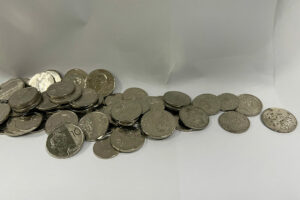




Inflation Update: Green light for easing
 DOWNLOAD
DOWNLOAD

December Economic Update: One for them, one for us
 DOWNLOAD
DOWNLOAD

Philippines Trade Update: Trade trajectories trend along
 DOWNLOAD
DOWNLOAD


Peso may trade sideways as markets await CPI, GDP data

The Philippine peso is expected to trade sideways against the dollar this week as markets await inflation and economic growth data.
Slower-than-expected April job growth in the US could also lead to a weaker dollar, analysts said.
‘[Markets will consider] the recent labor data in the US, where unemployment is pointing upwards again, while locally we have inflation and gross domestic product (GDP) growth data,” Robert Dan J. Roces, chief economist at Security Bank Corp., said in a Viber message.
The peso closed at P57.345 a dollar on Friday, 19 centavos stronger than a day earlier, according to Bankers Association of the Philippines data posted on its website. Week on week, the peso appreciated by 36.5 centavos.
The peso strengthened against the dollar due to lower oil prices amid easing tensions between Israel and Iran, Michael L. Ricafort, chief economist at Rizal Commercial Banking Corp., said in a Viber message.
The peso was also supported by the slower-than-expected US jobs growth, Mr. Roces said.
Inflation probably quickened to 4.1% in April, according to a median estimate of 16 analysts in a BusinessWorld poll last week.
This is within the 3.5-4.3% forecast of the Bangko Sentral ng Pilipinas (BSP) but beyond its 2-4% target. Inflation was 3.7% in March and 6.6% a year ago.
The local statistics agency will report April consumer price index (CPI) and first-quarter GDP data on May 7 and 9.
Finance Secretary Ralph G. Recto last week said the Philippine economy likely grew by 5.8-6.3% last quarter.
The lower end of Mr. Recto’s forecast is faster than the 5.5% growth in the fourth quarter, but slower than the 6.4% expansion a year earlier.
The government expects economic growth at 6-7% this year after expanding by 5.5% last year.
Mr. Roces expects the peso to move between P57.20 and P57.60 a dollar this week, while Mr. Ricafort sees it ranging from P57.10 to P57.60. — Aaron Michael C. Sy
This article originally appeared on bworldonline.com





 By BusinessWorld
By BusinessWorld